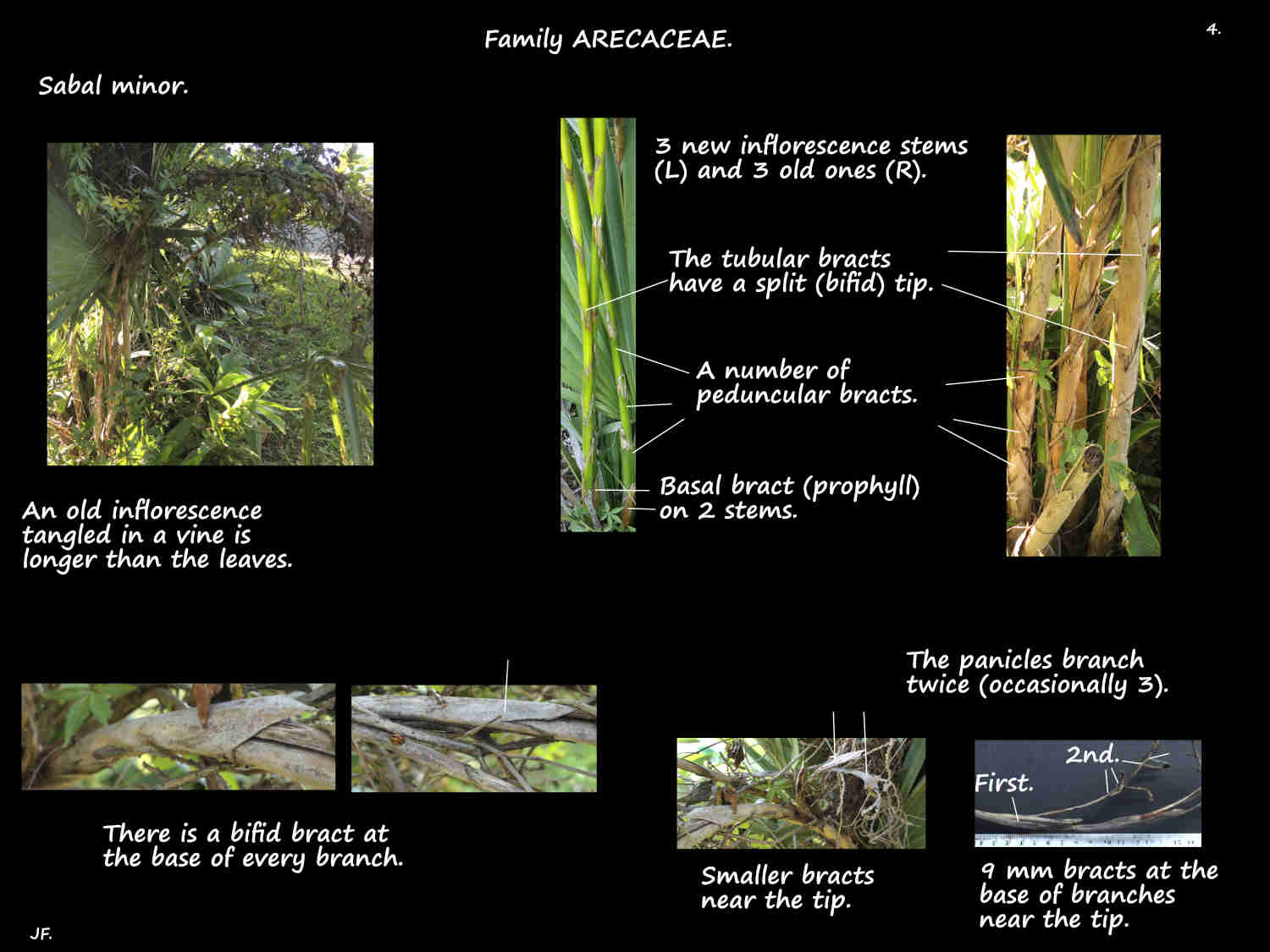The Dwarf or Bush palmetto is native to southeastern U.S.A. and Mexico.
It has over 20 synonyms mostly Sabal species and some Chamaerops.
They are a solitary palm typically with an underground stem (trunk, rhizome).
They can develop a short above ground trunk up to 1 or 2 m.
(In its native range it varies from having no trunk to one up to 3 m.)
The few to around 10 leaves can be up to 2 m long.
Just under half of this is the smooth green petiole.
The grey-green to blue-green blade has a midrib (costa) under 5 cm long.
The hastula (ridge on the upper surface between the costa and blade) has a rounded end.
The young costapalmate blade is circular and almost flat.
Adult leaves are typically divided into 2 halves by a split down to near the costa.
Each half is divided into individual segments or groups of a few.
Divisions extend halfway or more towards the costa.
There can be over 60 single segments or as few as 15 groups.
Edges of the stiff segments are folded up (induplicate).
Some segment tips may be split for up to 15 cm.
Most descriptions say the edges have no loose fibrils.
However *Scott Zona, the Sabal expert says the segments are “usually not filiferous’ indicating there may be a few.
The erect axillary inflorescences are longer than the leaves (S. Zona).
The panicles only branch twice (3) with branches well spaced along the midrib.
There is a basal bract (prophyll) and peduncular bracts.
The tightly fitting tubular bracts are split at the end (bifid).
Each branch has a small bract at the base and there are bracteoles under the flowers.
The primary branches can have around 25 rachillae up to 14 cm long.
Solitary bisexual flowers are spirally arranged along the rachillae.
Flowers have 3 sepals around 2 mm long, fused at the base and keeled.
The 3 free whitish to cream ovate petals are around 4 mm long.
The 6 stamens, in 2 whorls have basally fused filaments attached to the petals.
The 2.5 mm high ovary, of 3 fused carpels usually has only 1 ovule develop.
The roughly spherical drupes mature from green to brown then a shiny black.
Under 1 cm across they have a 5 to 6 mm seed.
(Where more than 1 carpel develops fruit are lobed berries with 2 or 3 seeds.)
There are around 20 mostly dwarf cultivars.
J.F.








